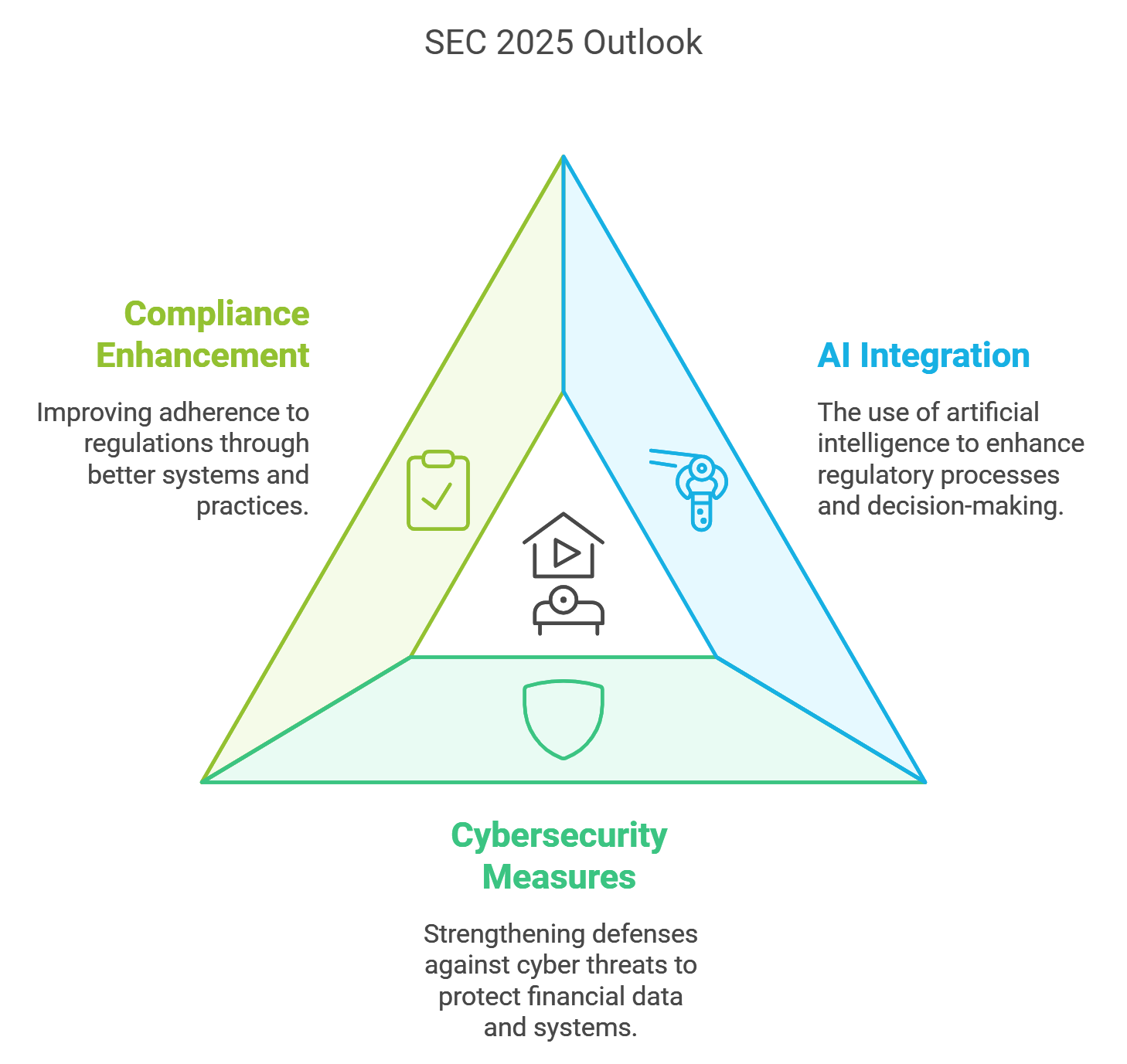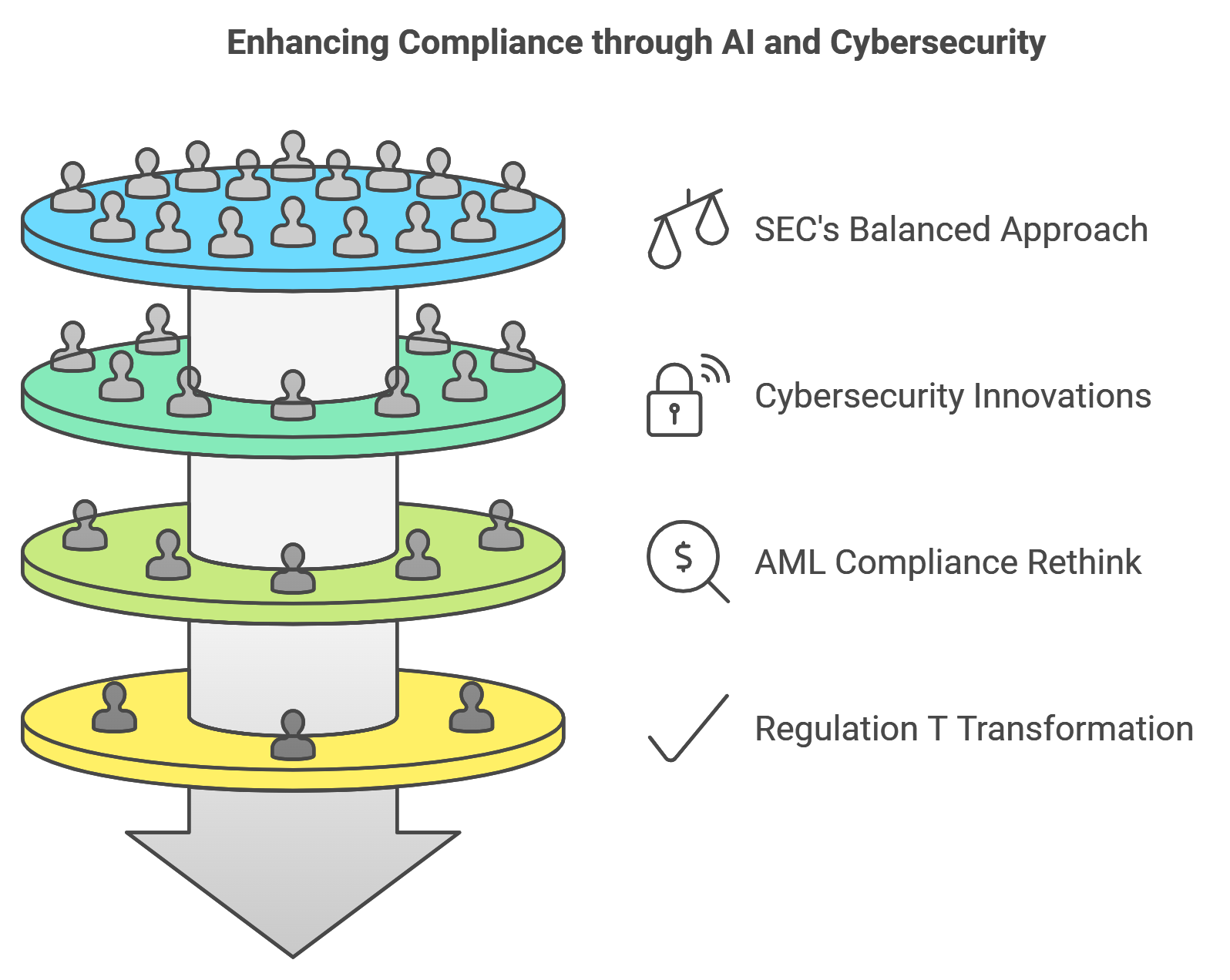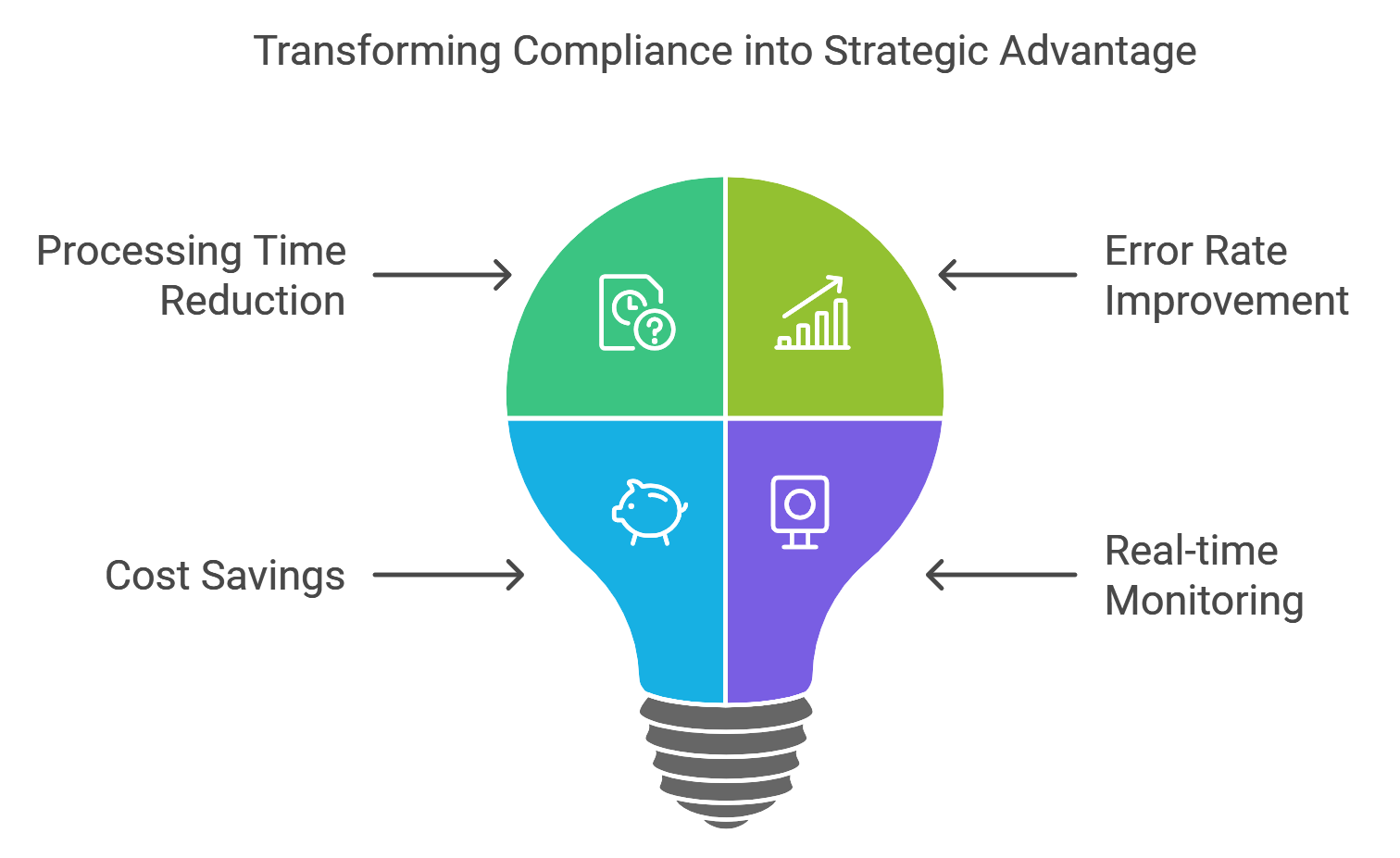2025 SEC Trends: Harnessing AI, Cybersecurity, and Compliance
4 min read
2025 SEC Outlook: Elevating Securities with AI, Cybersecurity & Enhanced Compliance
 Last week, I was on a call with one of our prime broker clients discussing their recent SEC examination. “The landscape has completely changed,” their head of compliance told me. “We’re not just checking boxes anymore.” After two decades in securities operations, I couldn’t agree more. The SEC’s 2025 examination priorities signal a fundamental shift in how our industry operates, and it’s one that deserves a deeper look.
Last week, I was on a call with one of our prime broker clients discussing their recent SEC examination. “The landscape has completely changed,” their head of compliance told me. “We’re not just checking boxes anymore.” After two decades in securities operations, I couldn’t agree more. The SEC’s 2025 examination priorities signal a fundamental shift in how our industry operates, and it’s one that deserves a deeper look.
The integration of AI into securities operations has become unavoidable – and that’s actually a good thing. We’re seeing firms transform their approach to compliance and risk management, but it’s not without its challenges. One clearing broker I worked with recently was generating so many false positives from their legacy surveillance system that their compliance team was spending more time filtering alerts than investigating actual issues. It’s exactly the kind of problem that kept me up at night in my early compliance days.
When we look at the impact of AI-driven compliance systems, the numbers tell a compelling story:
- 73% reduction in false positive alerts
- 8x faster processing of regulatory filings
- 94% accuracy in identifying genuine compliance risks
- 60% decrease in manual review time
Here’s what’s interesting about the SEC’s stance on AI: they’re embracing its potential while setting clear expectations for control and oversight. This balanced approach reflects a deeper understanding of where our industry is heading. At Loffa Interactive, we’ve built our AI framework specifically to bridge this gap between innovation and compliance requirements. It’s not just about having AI capabilities – it’s about implementing them in a way that enhances rather than complicates your compliance program.
The cybersecurity landscape has become particularly treacherous. Just last month, we helped a prime broker client thwart what could have been a devastating breach. The attack was sophisticated enough that it might have slipped through traditional defenses, but that’s exactly why we’ve moved beyond conventional security approaches. The SEC gets this – their emphasis on cybersecurity isn’t just another regulatory burden, it’s a recognition of our industry’s evolving risks.
Key Cybersecurity Trends We’re Tracking:

- Surge in AI-powered attack vectors targeting financial firms
- Growing sophistication of social engineering attempts
- Increased focus on third-party vendor security
- Rising importance of real-time threat detection
Something that’s caught my attention in recent client conversations is how firms are rethinking their approach to AML compliance. The old way of throwing more people at the problem just doesn’t cut it anymore. We’re helping firms reduce their AML-related false positives dramatically while actually improving their detection rates. One client called it “finding the needle in the haystack while burning less hay.” I love that analogy.
I spent years watching firms struggle with Regulation T compliance, drowning in spreadsheets and manual processes. It’s why we developed our FVD system in the first place. The transformation I’ve seen at firms using it has been remarkable – not just in efficiency gains, but in their ability to focus on growth rather than firefighting compliance issues. One firm’s operations director told me they finally feel like they’re ahead of the curve instead of constantly playing catch-up.
Real Results from Recent FVD Implementations:
📈 Processing Time: Reduced from 6 hours to 45 minutes
🎯 Error Rate: Dropped from 2.3% to 0.1%
💰 Cost Savings: Average 42% reduction in compliance-related expenses
⚡ Response Time: Real-time monitoring vs. end-of-day reviewThe prime brokerage space faces unique challenges in this new landscape. These firms need to maintain their high-touch service model while navigating increasingly complex regulatory requirements. Our PBIN system grew directly from countless conversations with prime brokers who were feeling this pressure. We didn’t just want to solve their compliance problems – we wanted to give them a competitive advantage.
What really excites me about the future of securities operations is how firms are turning compliance from a cost center into a strategic asset. The most successful firms we work with aren’t just meeting regulatory requirements – they’re using them as a springboard for operational excellence. They’re the ones who recognized early that strong compliance and efficient operations aren’t mutually exclusive.

Industry Pain Points We’re Solving:
- Regulatory reporting bottlenecks
- AML compliance inefficiencies
- Trade settlement delays
- Risk assessment accuracy
- Documentation management challenges
Looking ahead, I’m optimistic about where our industry is heading. Yes, the regulatory landscape is more complex than ever, but we also have better tools and smarter approaches to manage it. The firms that will thrive are those that embrace these changes and find ways to turn them into opportunities.
At Loffa Interactive, we’re continuing to evolve our solutions based on what we’re seeing in the field. Every conversation with a client, every new regulatory guidance, every emerging threat – they all feed into how we develop and refine our technology. Because at the end of the day, this isn’t just about compliance or technology. It’s about helping our clients build stronger, more resilient businesses.
The SEC’s 2025 priorities aren’t just a compliance checklist – they’re a blueprint for the future of securities operations. And if there’s one thing I’ve learned in my years in this industry, it’s that the future belongs to those who prepare for it today.